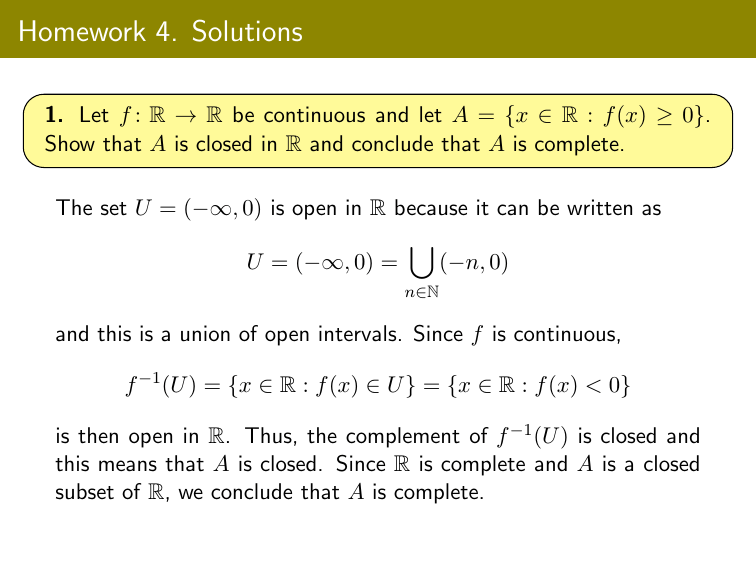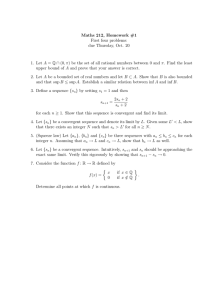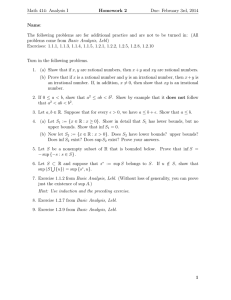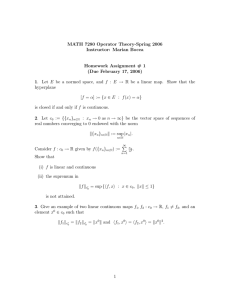Homework 4. Solutions
advertisement

Homework 4. Solutions
1. Let f : R → R be continuous and let A = {x ∈ R : f (x) ≥ 0}.
Show that A is closed in R and conclude that A is complete.
The set U = (−∞, 0) is open in R because it can be written as
[
U = (−∞, 0) =
(−n, 0)
n∈N
and this is a union of open intervals. Since f is continuous,
f −1 (U ) = {x ∈ R : f (x) ∈ U } = {x ∈ R : f (x) < 0}
is then open in R. Thus, the complement of f −1 (U ) is closed and
this means that A is closed. Since R is complete and A is a closed
subset of R, we conclude that A is complete.
Homework 4. Solutions
2. Suppose f : [a, b] → [a, b] is a differentiable function such that
L = sup |f ′ (x)|
a≤x≤b
satisfies L < 1. Show that f has a unique fixed point in [a, b].
Let x, y ∈ [a, b]. Using the mean value theorem, one finds that
|f (x) − f (y)| = |f ′ (c)| · |x − y| ≤ L · |x − y|
for some point c between x and y. Since L < 1 by assumption, this
shows that f is a contraction on [a, b]. On the other hand, [a, b] is a
closed subset of R and thus complete. It follows by Banach’s fixed
point theorem that f has a unique fixed point in [a, b].
Homework 4. Solutions
3. Show that there is a unique real number x such that cos x = x.
Hint: Such a number must lie in [−1, 1]. Use the previous problem.
Since f (x) = cos x is between −1 and 1 for all x, every fixed point
of f must lie in the interval [−1, 1]. Note that
L=
sup |f ′ (x)| =
−1≤x≤1
sup | sin x| = sup sin x = sin 1
−1≤x≤1
0≤x≤1
is strictly less than 1. In view of the previous problem, f must have
a unique fixed point in [−1, 1], so it has a unique fixed point in R.
Thus, there is a unique real number x such that f (x) = x.
Homework 4. Solutions
4. Show that the set Q of all rational numbers is not complete.
Consider a sequence of rational numbers that converges to
√
2, say
x1 = 1.4
x2 = 1.41
x3 = 1.414
and so on. This sequence is convergent in R, so it is Cauchy, but it
is not convergent in Q because its limit is irrational.











